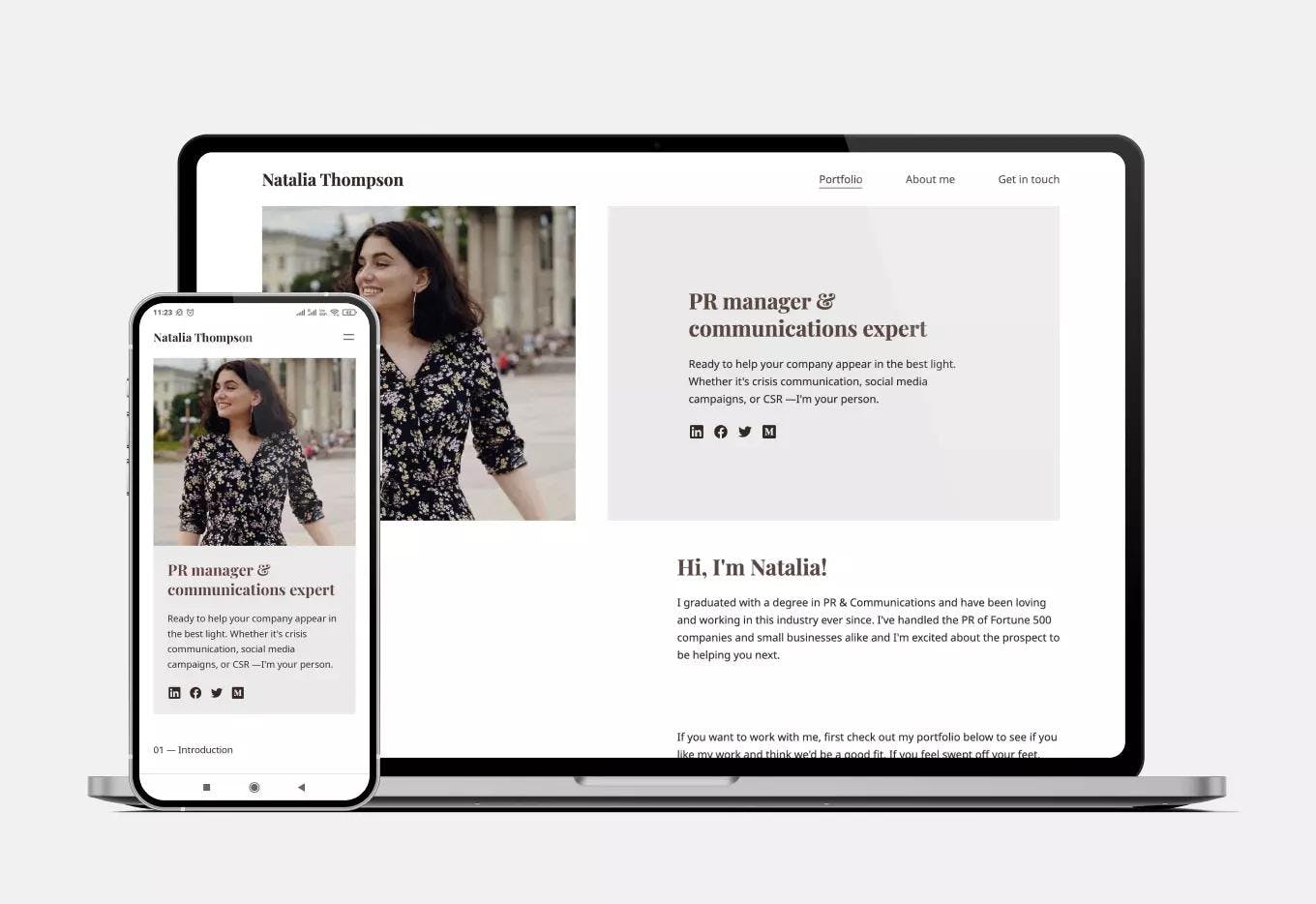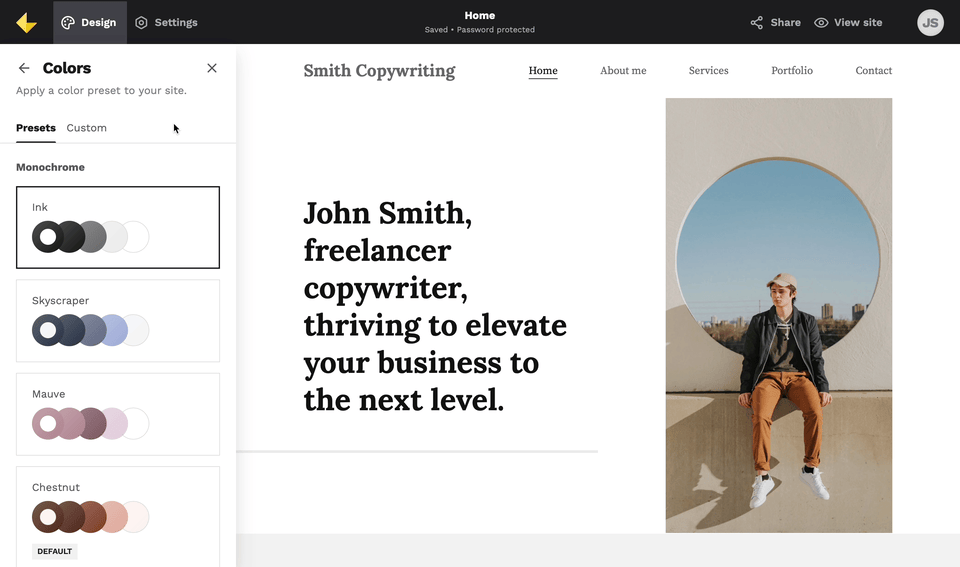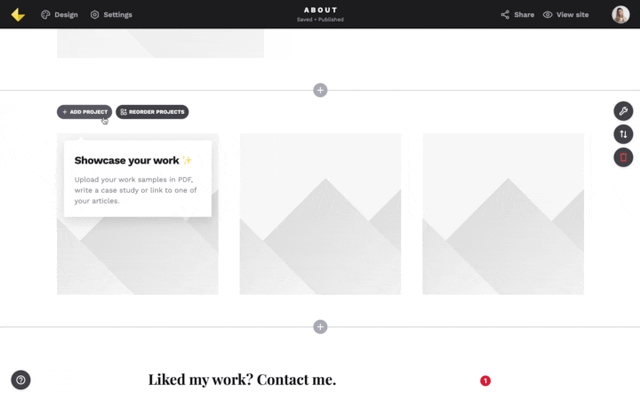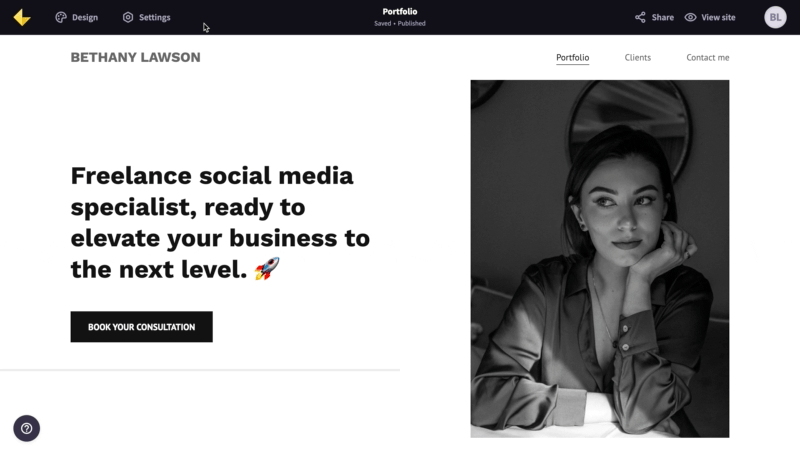The Ultimate PR Portfolio Guide: How to Create Yours Easily
PR has been around for decades and it’s not going anywhere. But with social media and news spreading faster than ever, it’s evolving at lightning speed. That also means that you not only need to keep up, but you also need to prove that when looking for your next challenge. And the best way to do that? Create a powerful PR portfolio.
We went through and analyzed hundreds of portfolios and dozens of PR/communications job posts, and in this post, we’ll show you how to nail them yourself. We’ll first talk about what a PR portfolio is and if you really need one. Then we’ll cover what to actually include in it and how to create it super easily.
CONTENTS
- What is a PR portfolio?
- Do you need a portfolio for PR and communications?
- What to include in your public relations portfolio
- How to create a PR portfolio easily
What is a PR portfolio?
A PR portfolio is a collection of your best public relations work and credentials, created with the aim of impressing future employers and prospective clients. It tells them about you and your work, shows your skills instead of just talking about them, and builds your personal brand.
Ideally, it’s in the form of a portfolio website, so you can easily share it with a link or others can find it through Google or social media.
Do you need a portfolio for PR and communications?
The answer to this question depends on whether you’re a freelancer or looking for a position in-house.
If you’re a freelancer, it’s an absolute, 100% yes. You’re expected to have a website that feels professional and features your top projects, showcasing your skills and establishing your credibility. You need that so potential clients will take you seriously and consider hiring you for their next project.
If you want to land an in-house position, the answer is technically not necessarily, but if you really want to get that job, then yes. What does that mean?
While it’s becoming more popular to ask for a portfolio in the public relations field, you’ll still see plenty of posts that only ask for a CV and a cover letter. But when they’re not asking for a portfolio, it doesn’t mean you shouldn’t send one.
Sending a professional portfolio website alongside your application will help you stand out from the crowd. And when there are other applicants with similar credentials and work history as yours, it can very well push the hiring manager to choose you against them.
Because it’ll show them that you’re dedicated and can present yourself professionally and convincingly —which will give them a good idea of how you’d represent their company too.

A PR portfolio example created with Copyfolio
What to include in your public relations portfolio
Once you decided you want a PR portfolio, comes the question: what should be in it?
There are three main areas the content of your portfolio should cover: you, your work, and your contact info. Let’s see how.
1. You: the PR professional
One of the most important reasons someone would look at your portfolio is to learn more about you. You can help them with a couple of simple things.
On the top of your portfolio homepage
First, write a strong tagline for the top of your homepage. So that when people land on your site, they know immediately what you’re all about. Ideally, it should have your name in it, your profession, and your specialization —or whatever else it is that makes you stand out.
Don’t forget to also add a photo of yourself. As a communications expert, you’ll know that we’re all biologically drawn to human faces. So no wonder that’ll help you build rapport and make a more personal connection, right?
On your about page
Now they know the most important facts about you —but what if they want to learn more? You don’t want to overwhelm visitors on the front page, so that’s what your about me page is for.
A separate about or bio page is perfect for writing more about your professional background (think courses, certifications, and previous workplaces) or the personality traits and interests that make you special.
Don’t forget though, that this page still serves a purpose. It’s there to give information and build a connection, yes. But it also has to be a readable length, fun to read, and able to convert whoever reads it. Which in this case means that they should feel like you’re the best PR professional they could possibly hire.
If you want to include your PR resume anywhere, this would be the best place.
2. Your work: the best PR and communications campaigns
The other most important (if not the main) reason people visit your PR portfolio is to see your work. This means you need to showcase your absolute best PR and communications campaigns there.
Creating a portfolio gives you the chance to show that your professional background is more than just a list of companies you worked for. Having your best campaigns on display will show viewers:
- your writing skills,
- how you execute a campaign from start to finish,
- the kind of connections you have in the industry
- how you collaborate with others in and outside your organization,
- what your creative process looks like, and
- how your campaigns perform.
All the things that really matter but won’t fit on a CV.
3. Your contact info: email and social media
People are here for you and your work, but if they can’t get in touch with you, it was all for nothing. So you need to make sure they can reach you —and do so easily.
The easiest way to do that is by adding your email address and social media handles to the footer of your website. Then it’ll be visible on every page, right where we’re already conditioned to look for it.
The other popular option is to create a contact page. There you can either simply display your email and/or phone number, or add a contact form for a super professional look.
Whichever method you choose is great, just make sure your contact info is there somewhere on your portfolio.
How to create a PR portfolio easily
Creating a PR portfolio easily comes down to choosing the right platform to do it. You’ll need a tool that’ll take over the coding and design, so you can choose a layout you like, fill it with your content, and call it a day. And maybe just move some things around if you need to.
Just like with Copyfolio, where you choose a portfolio template, get a starter site with the most important pages, and customize it for yourself.
Design with color palettes and font presets

Instead of setting the colors and fonts for every element separately, save time by using global presets. With them, it only takes one click to change how your site looks on every page.
Not to mention that palettes and presets guarantee a cohesive, put-together look for your site. Don’t worry, you can choose your favorite color and build your own palette if you’d like!
Add your campaigns to a portfolio section or page

Creating a website with sections is always the easiest. But it’s having a dedicated portfolio showcase section that really makes portfolio building a breeze.
Add your campaigns as projects with one click:
- as a case study page where you can write more about your creative process and the performance of the campaign
- as a PDF file you upload that people can view on a new tab after clicking through, or
- as an external link if it was published online.
We recommend creating a case study page for PR campaigns though. It gives you the space to add images, embed videos, and write about all the things we outline above. Because those are the things that’ll make an impact and help you truly stand out.
Get a custom domain

If you want to go the extra mile to present yourself as the professional you are, you need to get a custom domain. How much better does it look when you present your portfolio as yourname.com, rather than sending a random PDF or handing over a generic link?
On Copyfolio, you can search for and buy a domain for your site, and it’ll be automatically connected. No confusing setups and settings, just one click for your own custom domain.
Create your PR portfolio easily with Copyfolio!
Ready to get started with building your professional PR portfolio website? All you have to do is head to Copyfolio, and sign up for a free account.
If you have everything prepared for showcasing your best campaigns, you can finish your portfolio in under 30 minutes.
Take it for a spin and enjoy the speedy editor, prompts and guiding questions, and more. Get started for free today!




